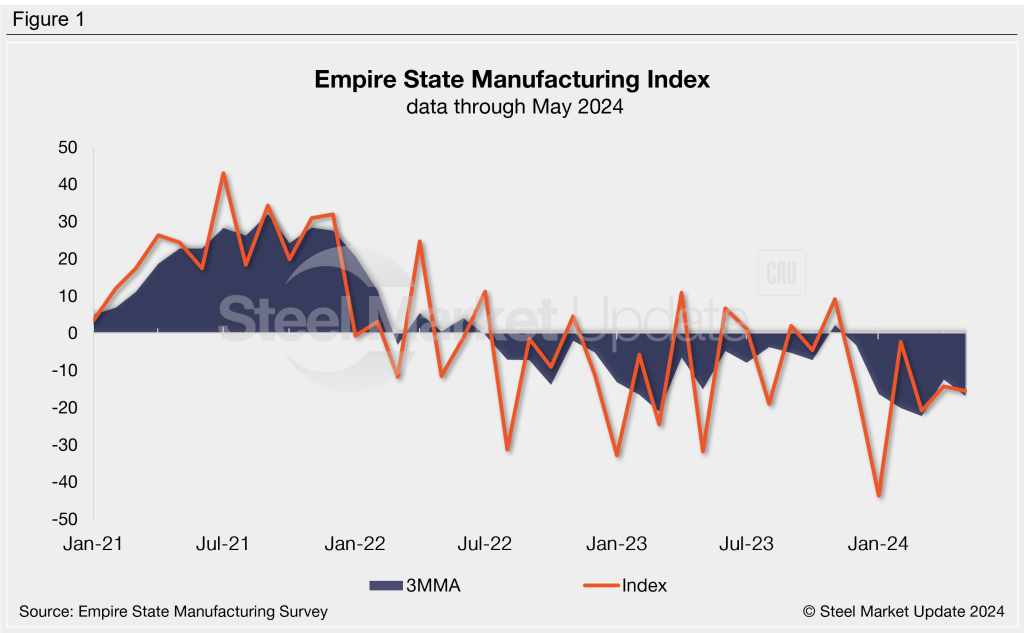Market Data
May 15, 2024
May manufacturing activity sluggish in New York state
Written by Brett Linton
New York state continues to see deteriorating manufacturing business conditions through May, according to the latest Empire State Manufacturing Survey from the Federal Reserve Bank of New York.
The General Business Conditions Index eased 1.3 points from April to -15.6 in May, the sixth consecutive negative monthly reading.
“Manufacturing conditions remained sluggish in New York State in May, with activity and orders continuing to decline,” Richard Deitz, economic research advisor at the New York Fed, said in a statement. “Labor market conditions were also weak, as employment and hours worked both fell.”
The Empire State Manufacturing Index survey indicated that new and unfilled orders both declined in May. Shipments held steady following April’s regression, while delivery times got shorter. Inventory levels were flat compared to the month prior.
Overall labor market conditions remain weak, as they have for months, according to the report. Firms expect business conditions to improve over the remainder of the year. The full release is available here.
On a three-month moving average basis (3MMA), the index moved lower in May to -16.93, now the third-lowest reading of the year (Figure 1). Recall that in March we saw the fourth-lowest 3MMA figure within our 15-year data history, only higher than the months of March, April, and May 2020.
The index saw significant swings in the first two months of this year, plummeting 29 points in January and then rebounding 41 points in February, remaining in negative territory in both months. Last year, the index peaked at 10.8 in April and has only indicated business condition improvements for eight months out of the last two-plus years.

An interactive history of the Empire State Manufacturing Index is available here on our website.







